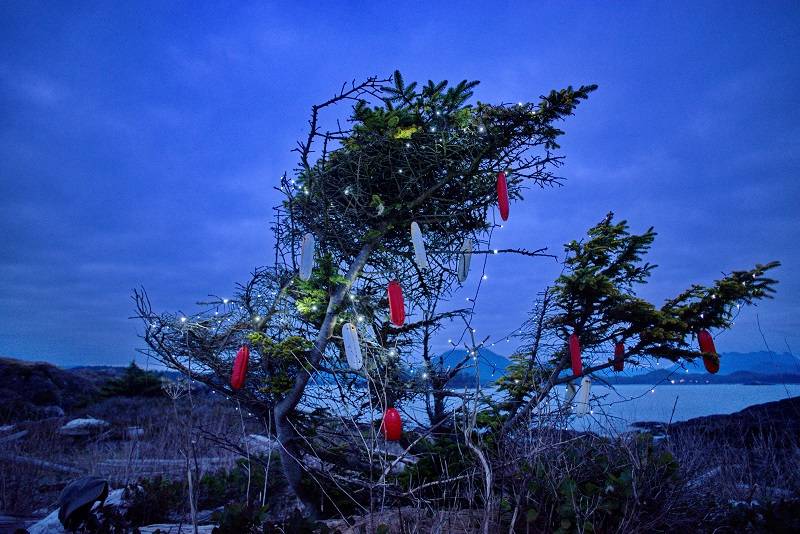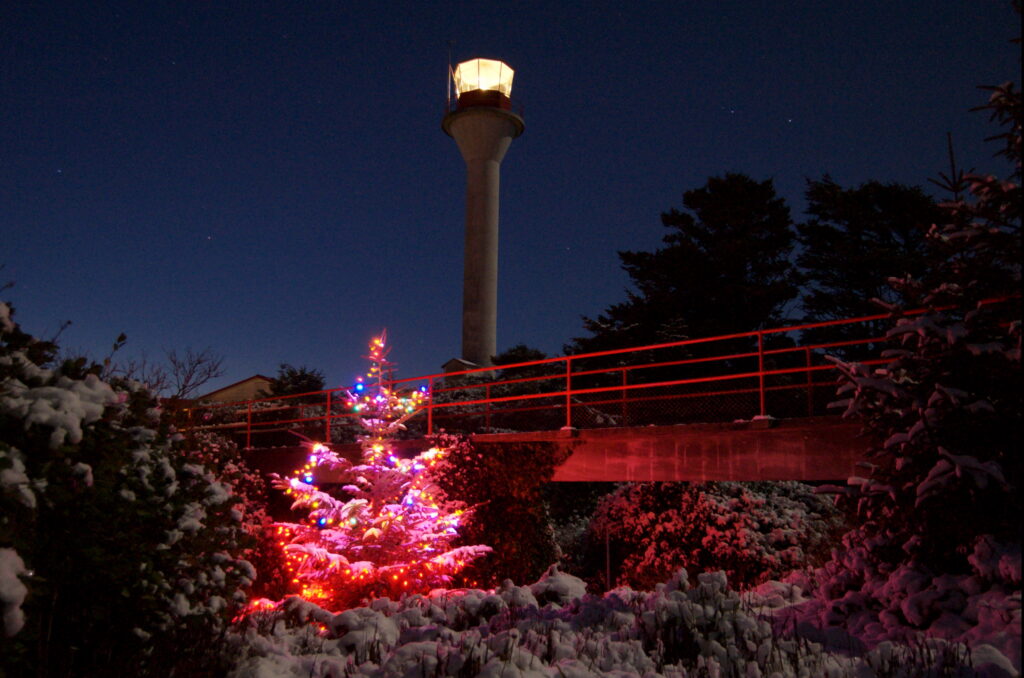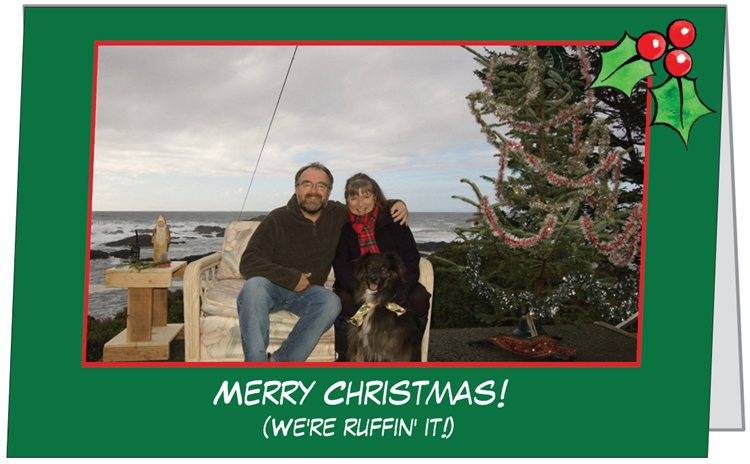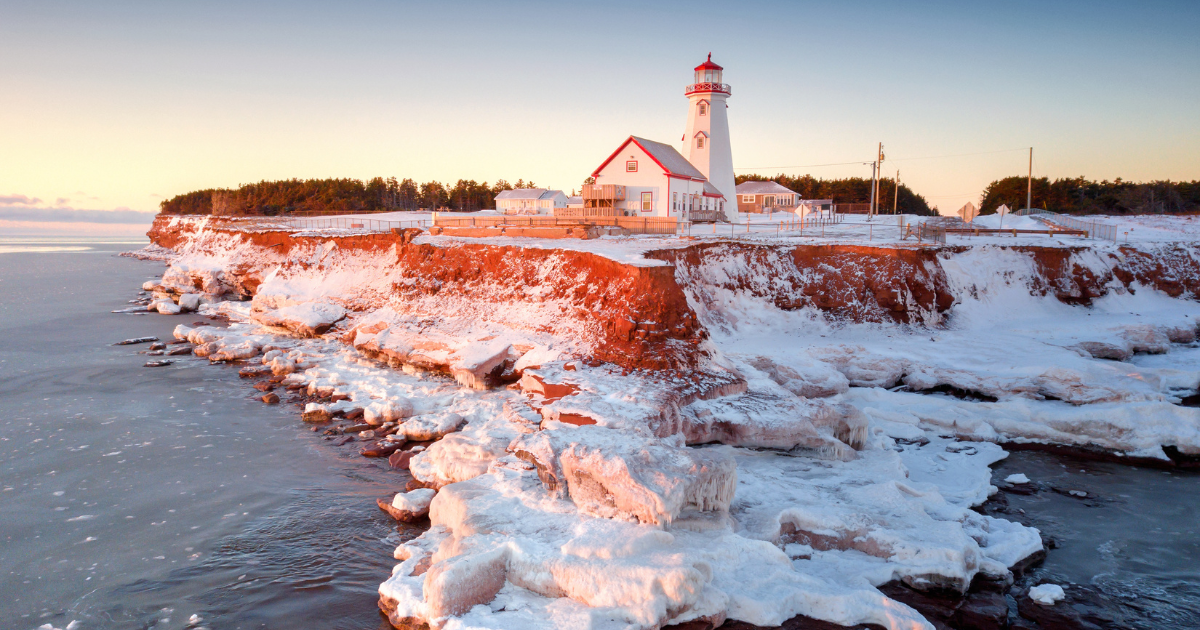“Not always,”I say to myself, thinking how unlikely it is that early lightkeepers working in drafty, leaking buildings ever felt like they were living a life of romance.

I think of those early keepers and their families waiting for the good ship, Estevan(which served B.C. lighthouses from 1912 to 1969), to chug up the coast with three months’ worth of groceries and freight. Precious Christmas cards, letters, gifts and culinary ingredients would be on the final ship of the year, often in late October. In 1928, one lightkeeper and father of seven drowned while trying to row out to the ship in heavy seas, so desperate was he to please the family waiting for him on Kains Island. I spoke to his 97-year-old daughter by cellphone while his granddaughter bought my memoir of becoming a lighthouse keeper. I’ve worked three different times at the Quatsino Lightstation on Kains Island, which his daughter left when just a baby, the youngest of those seven children. It’s one of a dozen lightstations on the B.C. coast where we’ve worked as relief keepers so the resident lightkeepers could take their annual holidays or deal with family or medical emergencies. So many connections pull at our heartstrings at this time of year, and nothing stokes the emotions of belonging to a family, or fondness for certain rituals and recipes or even personal sacrifice to make someone else happy as much as Christmas does.

In the 21st century, at 26 of the 27 staffed light stations on the B.C. coast, lightkeepers live in picturesque red-and-white houses separate from the iconic towers. The one exception is Triple Island, an imposing fortress on a barren islet 40 km (25 miles) west of Prince Rupert, where the light tower is still part of the residence.
For more than 50 lightkeepers on the West Coast, Christmas means one of two things: getting out to see family or staying on the station and making the best of the season. Since late December is, let’s be honest, a challenging time of year to travel long distances in Canada no matter where we live, we have opted to stay put since 2012. Getting “off the rock” is not easy or even guaranteed, at any time of year. We need to request permission to leave our posts many months in advance so that office staff can find replacement keepers from the pool of “relief” lightkeepers. Then coast guard helicopter or lifeboat transportation for ourselves and our relief keepers must be booked to and from one of a handful of coastal locations like Prince Rupert or Victoria.

Weather dependent is a term we take seriously, as we must request transportation off our light station on a coast guard helicopter or lifeboat at least three days in advance of crucial holiday flights or vital medical appointments. The allowance for extra bad-weather days also applies when we request travel for our adult son on the helicopter making the last parcel run of the year in late December. We’ve had wonderful Christmases with him, and then a few mad scrambles getting him out of remote stations like Cape Scott (where we were working as relief keepers) and back to university or work on time.
We are fortunate to have our groceries delivered once a month by helicopter from orders placed online to stores in cities, instead of once every three months by ship. Green ham and equally rotten eggs are rarely our lot in this era. It does mean we need to start ordering Christmas baking supplies in October in order to do the baking in November and put our coast guard boxes on the first December helicopter.

Coast guard boxes? Well, yes, there is a long-standing tradition of lightkeepers sending festive baking to staff at the nearest Canadian Coast Guard offices (the Marine Communications and Traffic Services centres, a.k.a. our radio stations), to the hangars for the pilots and engineers, and to the crews at the lifeboat stations.

This tradition prompts my own annual reconnection to recipes, to the friends and family who created them, and to complete strangers who discovered my website or my books and reached out to write me. Some of them, reading about my love of gardening and good grub, shared their favourite recipes. Heidi is a retired coast guard accountant who sent me her Christmas stollen recipe, winkled out of Heiner Konditorei,one of Vienna’s most renowned bakeries, and which I can only describe as five-star fabulous. It takes three days to create, from soaking the dried fruit at the start to the marzipan filling in the middle and sealing the loaves in layers of icing sugar at the finish, not counting storing all six of them in a cool pantry for at least three weeks. My husband and fellow lightkeeper, Jeff George, makes at least four big blue-speckled roaster pans of his tweaked-to-the-max, highly addictive nuts and bolts, a salty, spicy, crunchy snack with pretzels, and a classic 1950s chocolate cherry flip cookie recipe. It is also mandatory for me to make Tofino Radio Rum Balls, in honour of the operators there who were quite vocal in their appreciation. (Maybe the three weeks of cool storage enhanced or even accelerated the genuine dark rum content?)

I make shortbread “hands” thanks to a cookie cutter bought in a San Antonio, Texas, museum gift shop while visiting a good friend there, and I dip the “fingers” in melted chocolate. If my stamina is holding up, I make gingerbread people, because even if they don’t quite arrive intact to their destination, nobody complains about losing an arm and a leg. Other recipes come and go, like the traditional French heart-shaped, orange-glazed pain d’épice, which cry out for an espresso per cookie (because they are even harder than biscotti, so I have to warn people to nibble and to savour their subtle spiciness). Or the labour-intensive pudding bonbons, which took me so long to decorate with teensy holly leaves and berries that I swore I’d never make the little so-and-sos again.
Memorable gifts coming our way include a wee bottle of blackberry liqueur made by one of the pilots who spent several downtime hours picking from our abundant wild blackberries one summer. The thoughtful lads from one of the Tofino lifeboat crews delivered a box last Christmas with four live occupants, crabby purple ones, Dungeness crabs, in fact! Delicious still-warm crab tarts made by a female crew member were delivered, and swiftly devoured, another year. Kayak guides and whale-watching company friends sent divine Italian fig and chocolate confections and panforte cakes.

Another tradition, begun when I was single and continued for more than three decades as a couple and family is the Christmas photo card (with a dog in every single photo). Often goofy, sometimes unintentionally, embellished by wit or sentiment or a bit of both, we are now committed to it, as people expect it and query if they have not received their card yet. There are now about 65 people on the list, even though we make up rules to justify dropping some of them. (If we don’t get a card from them for two years in a row, that’s it!) Rules we seldom obey. It’s becoming rather expensive— and, yes, I’m looking at you, Canada Post—at nearly a buck a card, even though I buy stamps in bulk, but it’s a labour of love. To add to the joy, Jeff is a photographer, and every year he pours dozens and dozens of hours into creating a lighthouse wall calendar, which used to be very reasonable to reproduce but is now getting downright pricey to create and mail out. But the hue and cry if we dropped some folks from that list of two-dozen-plus would deafen him or certainly guilt him out, so that tradition continues as well. The good news is that one such calendar image ended up thanks to a writer friend on her editor’s desk and then again to the publisher’s art department until it appeared on a lovely book cover in Canada, the U.S. and the U.K., so serendipity may strike again. Let’s hope! Meanwhile, thrifty yours truly collects garden seeds and flower seeds and mails out tiny bags of English cucumber or burgundy hollyhock seeds tucked into Christmas cards.
Never mind. We spend money on cards and calendars because we can’t spend it on high-season airfares to actually visit our family and friends. We need and value that connection to our shared histories. We send enduring love and gratitude along with homemade dog biscuits and heritage seeds and rum balls with Nicaraguan rum. We set up little solar panels and get the flashing white fairy lights going on a handy spruce tree to keep our own spirits up as we trudge off to do weather reports at 3:30 a.m. and 9:30 p.m. in the depths of darkness beneath icy downpours. We set up the little reindeer made by an unknown lightkeeper to cheer us up in the radio room, and we always have a tree and lights. Lots of lights.

Let there be light!


I am a writer, of fiction, poetry and children's books, living on the Lennard Island Lightstation at the entrance to Clayoquot Sound, near Tofino, BC. I am qualified as an Assistant Lightkeeper and often work relief at this and other lighthouses. The time I have to myself when I am not working has allowed me to complete my novella for children, The Village of Many Hats (Oolichan: 2012), my Canadian Odyssey novel for adults, Penny Loves Wade, Wade Loves Penny (Oolichan Books: 2010), and my children's book, Singing Away the Dark (Simply Read Books; illustrated by Julie Morstad: 2010). In September 2015, after seven years of living and working at more than a dozen B.C. lighthouses, Harbour Publishing will release my first book-length non-fiction work, Light Years: Memoir of a Modern Lighthouse Keeper.













